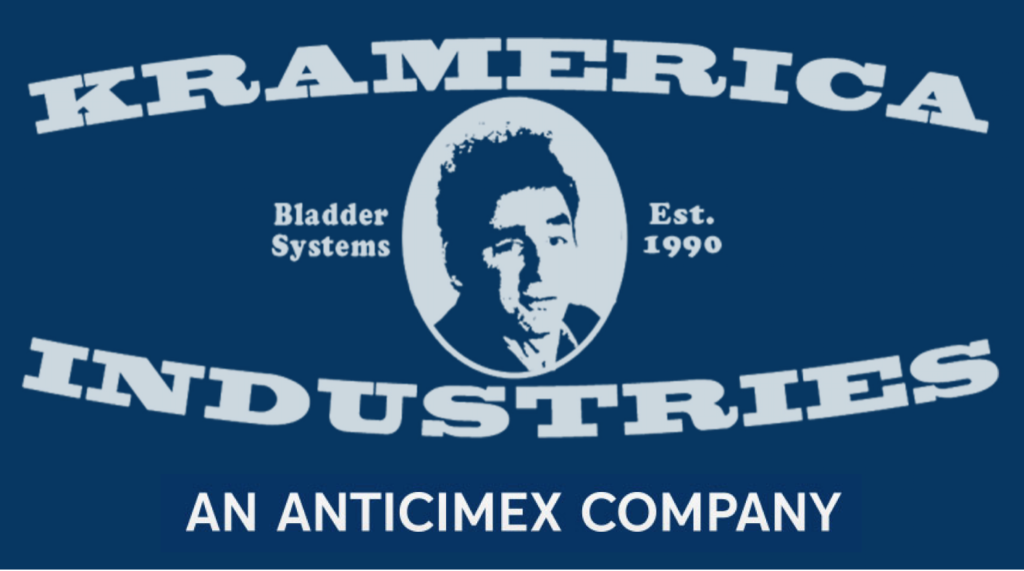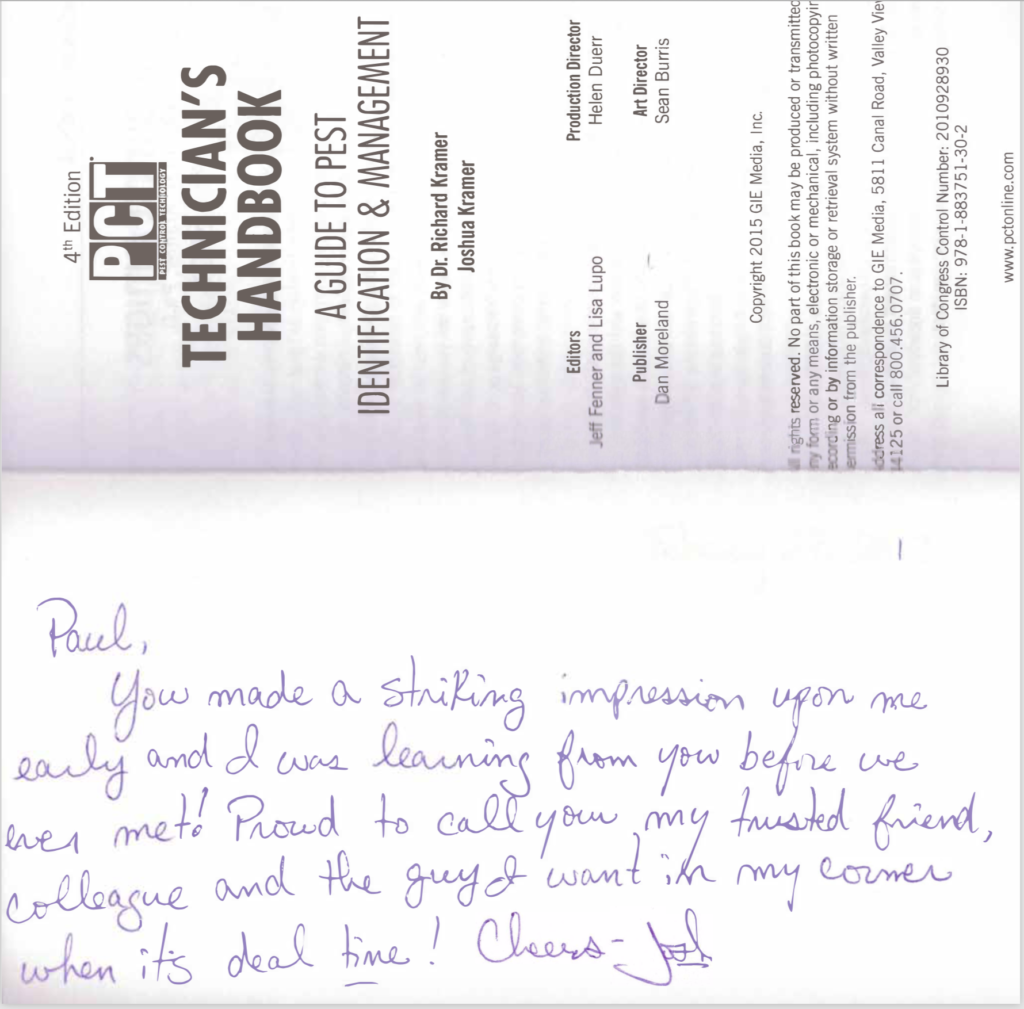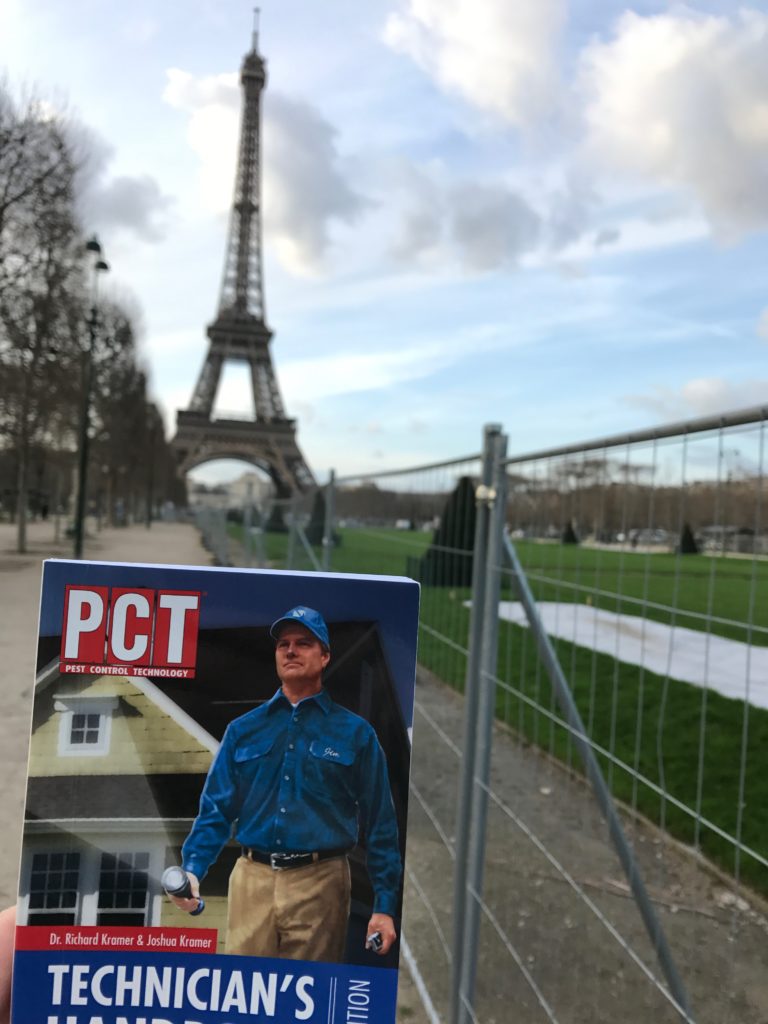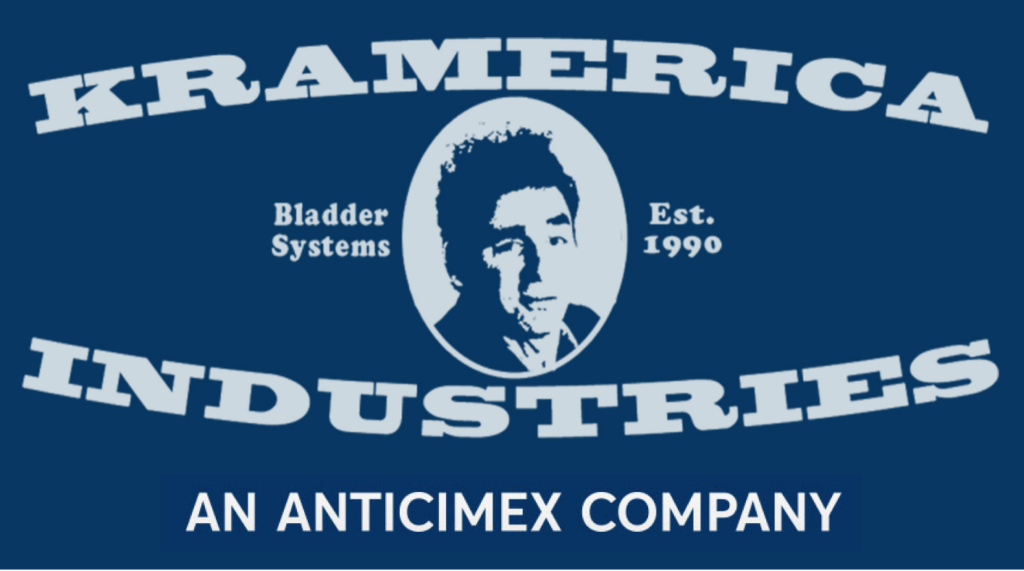A New Format for the Weekly Commentary
While I was back in the US in December, I had a dinner meeting with a client who said, “I would like to open this meeting with some criticism. I never miss an issue of your Weekly Commentary, but recently you’ve gone off the rails with your economic analysis. While I might not be the smartest guy in the industry, I consider myself smarter than most, and I wasn’t really sure what the hell you were talking about last month (in reference to this: Weekly Commentary November 5). Do you really think people in the pest control industry want to read about economics?” He might have a point, people in the United States Congress certainly don’t. Case-in-point, I just heard Congresswoman Alexandra Ocasio-Cortez on the news saying that the reason why the unemployment rate is so low is because people have two jobs, and they are counted twice.
Another client, later that week, emailed me saying, “I am not sure if I read your commentary for entertainment or education. But I am enjoying your economic insights immensely and I am learning a lot from you. I really wish you’d write more on those topic.”
So, after reflecting on this over the holidays, I decided how to solve the dilemma. I am going to break down the Commentary into a more modular format. Read what you want to read and skip the rest. Not every week I’ll cover each section, but the sections will be generally broken down as follows:
- Announcements – Transactions and other announcements like the one below on today’s live webinar and the Innovative announcement. Going forward, when possible, I am going to try to go into a little more detail on the transactions themselves. I learn a lot on every deal and I am going to try to better to highlight things that you can learn from as well.
- The Pest Control Executive – I get more requests and questions on strategy and management of a pest control business than I do on valuation, M&A and the things that I am actually qualified to opine on. I’ve received a lot of requests to write more articles like this, so beginning next week I’ll do that. This section will deal with strategy, management and operations. Today I just have a few short paragraphs on an interesting conversation I recently had.
- The Institutional Investor – The Weekly Commentary is read by scores of equity research analysts, hedge funds, private equity firms and other institutions. Most of what they are interested in isn’t particularly interesting to owners of privately held pest control companies, but it’s very interesting to me. Some of the most thoughtful questions and interesting dialogue that I have is with the equity research and hedge fund community and I welcome their comments and questions. Today I will be answering some questions from a hedge fund. Next week we’ll get into some equity research Q&A.
- Economic Viewpoint – It is this section that all but the dorkiest among you will skip. Nothing today, but this, as you know, is one of my favorite topics.
- Q&A – I’ve got a lot of questions to answer and I really look forward to doing more of this. We’ll get this started next week.
- The Back Page – You’ll see next week
Opportunity Zones – A Don’t Miss Webinar Tomorrow

Sorry for the late notice on this, but I just found out about it over the weekend.
Cory Vargo, the best tax advisor I’ve worked with in the United States is a partner at accounting firm Wipfli. Now, unless you’re some sort of finance or accounting nerd, you probably don’t know who or what Wipfli is (until I met Cory, I didn’t, and I am still not sure I can pronounce it). However, just like the pest control industry, Accounting Today Magazine (the porn mag of the accounting industry) has a Top 100 list and Wipli is number #20 on the list.
Anyway, today, January 23rd, a few Wipli partners in conjunction with the ACG are putting on a webinar to discuss Opportunity Zones.
If you are a recent seller of assets or a future seller of significant assets and you live in the US, you might want to check this out.
Cory shared this with me and some of our mutual clients a few days ago, if you’re interested, the link to sign up is below. Here’s Cory:
“I wanted to share with you a free webinar Wipfli folks are putting on regarding Opportunity Zones. OZs are a new set of rules with the Tax Cuts and Jobs Act that allow for the deferral of taxable gain to the extent qualified investments (real estate, businesses, etc) are made within qualified opportunity zones (as identified by each state’s governor), if such investment is made within 180 days of the recognition of the gain that is to be deferred.
The idea is to drive investment into certain low income or economically distressed areas.
The regulations just recently came out on this, and some people at Wipfli are really spearheading the practical application of these rules for people like you with a lot of capital gain.”
Here is the link if you’re interested:
https://www.acg.org/events/webinar-taking-advantage-opportunity-zone-investing
American Pest Acquires Innovative Pest Management, a PCT Top 100 Company

I am very pleased to announce that we’ve completed the sale of PCT Top 100 — Innovative Pest Management — to American Pest, an Anticimex portfolio company based in the Mid-Atlantic.
There is no doubt that the Swedes have been eating more than meatballs up and down the Eastern Corridor. The ink wasn’t even dry on the Triple S purchase agreement and we were drafting a purchase agreement for Innovative.
Owners, Dr. Richard Kramer, his son Josh Kramer and their partner Luke Krikstan are some of the nicest guys in the industry and the story of Innovative is a true success story.
I met the Kramers from a mutual friend and client in the industry and Josh and I, being the same age, became fast friends.
You may know the Kramers as the authors of PCT’s Technician’s Handbook. I’ll be honest with you, I’ve never read the book, but a few years ago Josh gave me a personally autographed copy. When he gave it to me, I thanked him for taking the time to write the thoughtful note and I remember him joking that if I can find an “unsigned copy” somewhere it would be worth a fortune.


The book has been around the world and its current location is sitting in my almost never-used apartment in Paris’s 7th arrondissement. Which is ironic considering there are virtually no pests there. Though I have discovered that the French solution to pest control is simply make yourself smell like pesticide. The French shower once a week whether they need it or not, and they all smell like Terminix’s garlic oil mosquito repellent. If you think I’m kidding, go to a Paris night club at 3am in mid-August after they’ve been dancing for hours in no air conditioning.
The Swedes reading this are searching the internet right now for Kramerica Industries. What is Kramerica? Did we buy a company called Kramerica Industries?
As you know, I am a big Seinfeld fan and since this business is owned by a Kramer, it was a perfect opportunity to code name it Project Cosmo. However, Josh got to it first and named it after his daughter, Project Luna. Damnit.
In some ways, Kramerica Industries is fitting for Innovative. This is a company that grew from zero to PCT Top 100 in little over a decade. However, when you walk inside its expansive offices all you see is smiling people playing games, laughing and joking. While I didn’t witness any “High tea with a Mr. Newman,” everyone has a good time at IPM. Luke and the Kramers did a great job in a building a strong, loyal and fun culture to work in. As you can imagine, I’ve visited a lot of pest control companies over the years and every once in a while I feel like I’ve dropped in on a funeral in process.
What struck me about Innovative was the tenure of its employees. Although the firm itself isn’t very old, the employees stick around. Over the years I’ve come to realize that owners make an important strategic decision, whether implicit or explicit, as to where their priorities lie. The strategic decision is simply what do the firm’s core values prioritize: shareholders, employees or customers. Although value creation lies with creating and keeping a customer, in a service business, prioritizing the employee above all else often leads to happy and sticky customers, resulting in high returns to shareholders. I was able to see that in action over the last two years working with the Innovative team.
The acquisitions of Triple S and Innovative were great moves by AX and have effectively doubled the size of American Pest… and perhaps a raise for David Billingsly, American’s President, if he plays his cards right. I am thrilled to have advised the company on this transaction.
Doc and Luke were able to retire and Josh is now working for American. Although Doc is restricted from certain activities in the market, he’s an extremely accomplished PhD entomologist and phenomenal expert witness, so if you need any advice, track him down, he’s a great guy. I’ll leave you with a final word from the Doc…
Doc Kramer commented: “I have been in the Pest Management side of the business for 27 years, including 5 years at NPMA and I have not met anyone involved in M&A in our business that is more professional and knowledgeable than Paul Giannamore. Through the entire process involving lawyers, accountants, tax advisors, etc., Paul was the go-to guy for the final answer. I would trust no one else with the sale of my pest management business.”
The Pest Control Executive: Two Simple Ways to Hire Great Employees
I recently had a conversation with a client who is worth over a $100 million. [As this individual is likely reading this right now, I’ll remind him that he is worth $100 million on paper, until the value of the business is monetized].
We were talking about some of the mistakes he’s made over the decades hiring people and building his staff, and some lessons that he’s learned. Here was his advice:
You always have to be thinking about how you and your business can improve the life of a potential hire. If they are overqualified for the job, or just plain desperate, they will leave when the situation changes. Since I’ve lived in the same town most of my adult life, I began looking around at other businesses and the employees that I liked to deal with. For example, about 20 years ago, I met a young man who was working at the local grocery store. He had worked there for a few years, so I knew he could hold down a steady job. After interacting with him for a few years, I came to realize that this kid was always very polite and friendly. He seemed to go above and beyond for me and the other customers and his coworkers loved him.
One Saturday afternoon while checking out, I said to him, “Jim [not his real name], what are your career aspirations?”
He looked at me surprised and said he hadn’t quite figured it out yet, but it certainly wasn’t bagging groceries and sweeping the floor.
So I invited him to our office for a cup of coffee and to meet some of our people. Twenty years later, and he is probably one of the best commercial technicians we’ve ever hired. I showed him how he could have an exciting, well-paid career with us, and apparently he agreed.
The key point here is this. He probably would have never coming looking for us. I was looking for him. I am always looking for talent and one of the easiest ways to find talent is ask the people that serve you in your community. If they’ve been great to you over the years, they will probably be great with your customers.
As a growing firm, however, you can’t rely on your ability to pluck talent from the local butcher, baker and candlestick maker. So I was curious as to how he had dealt with assessing technicians over the years. You put out an and then the parade of idiots shows up at your office. How do you separate the wheat from the chaff?
I’ve learned a lot of hard lessons about hiring technicians over the decades and have found that one of the best interviewing techniques is to make the candidate do a ride along with a relatively junior technician before making a formal offer. Candidates always, always let their guards down when they are with a junior person. They will say things to an employee that they would never say to a manager, owner or executive. During the ride along, they get comfortable and it’s amazing the things that they will say.
After the ride along, at the end of the day, I would call the technician into my office, have a cup of coffee and ask the following questions:
- What questions did the candidate ask you?
- Did the candidate seem at ease with our customers? Was he friendly and polite?
- What qualities did you observe in the candidate that would be beneficial to the team?
- Did you observe any qualities or habits that would be detrimental to the team?
- Did he seem eager to learn and active in discussion with you or was he tweeting and twixing [sic] on his facebook phone?
Remember, it’s not the technicians job to make the job decision, it’s your job, but if you aren’t doing this, you’re letting sloths and losers into your business. This is a great tool and we continue to use it on every new hire.
The Institutional Investor’s Corner – Q&A
Today’s institutional investor’s section deals with some Q&A that I have received from institutional investors and equity research analysts covering the pest control industry. As with all questions submitted, I have been very careful to remove all identifying information to protect the identity of the sender.
Question
Hi Paul,
Thanks for writing such great articles on the industry, we really learn a lot from reading them (I also find them quite entertaining)! We think your observations have so many parallels with other sectors in the public and private markets right now (which I struggle with given we invest a lot in technology and software companies).
A few points really stood out and I wondered if I can ask you about them.
You mentioned multiple expansion and arbitrage you’ve been able to do over the past few years. Do you think in the near term some of the acquirers will start to get into more severe problems when it comes to integration of these groups of assets that they so aggressively bought over the last 1-2 years?
Answer
Rollins and ServiceMaster will have the least amount of integration issues given their scale and relative low volume of acquisitions relative to Rentokil and Anticimex.
In 2017, Rentokil dedicated significant time and resources to their integration efforts and realization of scale economies from the “acquisition binge.” From 2013 through 2017, I think they worried largely about getting deals done, whereas 2017 demonstrated some concerted effort in rationalizing and integrating.
In North America, Anticimex has been one of the most active acquirers in the last 18 months and is currently running five distinct platform companies in the US. I think that their decentralized model is both a strength and a weakness. It’s a strength because they are investing in their local brands and at least with regard to the platforms, they are running semi-autonomously. We’ve advised on the sell-side on AX acquisitions that probably account for more than half of their US revenue and quite frankly, I’ve really only heard good things from the sellers. In fact, for many of the rank and file employees, it’s hard for them to even point to changes that have occurred due to the acquisition. At the end of the day, however, we know that they can’t compete with the likes of Rollins without realizing scale economies, at least at some point in the future. How they handle this will be very interesting.
All in all, I don’t see “severe” problems on the horizon for any of the large players due to the volume of acquisitions. That’s not to say it won’t be a bumpy ride along the way.
Question
You also mention a $600m+ pipeline of transactions. Are these mainly small to mid-sized deals or do you expect also $50m+ revenue transactions to happen? I find it very interesting to understand if the owners of the bigger assets are finally coming to the table and feel that the time is right to get out of the game.
Answer
I received this question in early December, so it is a little dated and it’s apparent now that I was referencing Clark Pest Control as a part of the industry pipeline.
2019 will be the stay or go year in the industry. What I mean by that is for the folks who are considering selling at any time in the next few years, 2019 will be the year that they pull the trigger on a sale. Those who do not pull the trigger in 2019, are likely the ones who are in for the long haul. The risks to sellers in delaying the process grows by the day now that we are in 2019. If I were a betting man, I would say that we’ll see at least one $50M+ seller get snagged up.
Question
You mention historic multiples being in the range of 1x revenue and 8-10x EBITA roughly…where are they today, just roughly, for let’s say businesses of $5-20m revenue?
Answer – 2019 Outlook
For businesses in the $5m to $20m range, we are seeing EBITA multiples top out in the low to mid teens. It’s not entirely out of the question to see a company breach 15x EBITA and 3.0x+ revenue in this market.
Over the next six to twelve months, I anticipate that we will see multiples expand further, with downward pressure at the low end of the range.
In December and January, we’ve already begun to see acquirers tighten up what they are willing to pay at the low end of the range and in certain cases, for some of the larger assets.
Overall, I think that activity will remain elevated in 2019 (at least the first half) and I expect to see at least a half dozen PCT Top 100 companies sell throughout the year.
